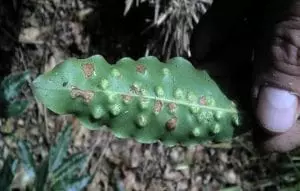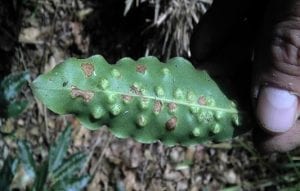Checking chickens for mites and lice
Therefore, how do we properly treat our chickens to protect them against mites and lice? Well, the first thing to do is establish if there’s a real need to treat your hens at all. It just might be the case that your flock doesn’t have a mite or lice problem whatsoever!
Furthermore, mites are the real baddies and need to be taken seriously particularly if they are in large numbers whereas a few feather lice around the flock isn’t something we should panic about, to be honest.
Remember, mites and lice are different animals. A mite is an arthropod and has 8 legs like a spider and lice are insects so they have 6 legs. Also, most mites live away from the hen in and around the coop and only come out at night to crawl onto the bird to feed, although, there are some mites that do burrow under the skin and scales of the chicken but they aren’t usually as common.
Lice don’t generally bite and suck the blood from chickens (like mites do) they live on dead skin and feathers. Therefore, whilst lice may cause irritation and should not be allowed to build up in big numbers on hens, they are not near as bad as mites, which can kill birds if left to grow in large numbers.
Check your hens for signs of mites and lice (a magnifying glass is helpful) and look for things like: egg clusters at the base of feathers or around the vent, tiny moving specks on the chicken’s skin, gatherings of mites around the legs or neck, scabs around the comb or head, plucking own feathers, bare patches of feathers, irritations and abrasions, or a hen looking generally sad and unwell.
Scaly leg mites can cause ugly inflammation and scale build up on the hen's legs due to the mite burrowing under the scales and is a rather easy condition to spot. Mites that live on the bird such as scaly leg mites should be treated ASAP.
Other places to look for mites and lice are in nesting boxes, on roosts, and around cracks/crevices of coops. These little bugs and arachnids can be quite easy to spot when they move.
General treatment rules
If your hens don’t have any signs of mites or lice then perhaps it’s not necessary to treat them but this depends on a few variables in my opinion anyway, such as:
-
The history of mite and lice infestation – If you have had a history of bad infestations then you might consider it prudent to treat your poultry as a preventative measure as many poultry owners do. However, if mites and lice are not a big problem in your area then you could monitor your flock and only treat at the first signs of parasites or just a few times a year (for example bi-yearly or quarterly). Personally, I’m rather hesitant to treat my birds for prevention purposes only, because it seems to be a waste of resources, time, and unnecessary chemicals on my flock.
-
Your location – Some places are more prone to these awful parasites than others so if your area is renowned for having plenty of mites and lice then it is probably a good idea to have a regular treatment routine. Also, if your pen or free-ranging area is freely and frequently accessed by wildlife such as wild birds then regular treatments may be necessary.
-
Introducing new birds to your flock – When you get new hens to add to your flock it’s not a bad idea to treat all birds for mites and lice just to ensure no extra “passengers” on the new hens get a chance to breed up and infect the whole flock. As a side note, keeping new birds in quarantine for a few weeks can also protect your existing flock against unexpected introduced diseases.
Also, parasites don’t just stay on the chickens so you need to treat more than just your hens! Whenever chickens are treated for mites and lice all the mulch/litter in their nesting boxes and around the coop should be removed at the same time and the whole place treated to ensure parasites hiding in the cracks and crevices are eradicated otherwise they’ll just re-infest your poultry.
If you’ve had a really bad breakout of mites or lice it’s best to repeat the treatment about 10 days later (or as directed on the product instructions) to ensure any newly hatched nits or eggs are taken care of also – it’s called breaking the cycle.
If you choose to mainly treat your flock when external parasites are detected (this is what I do) rather than as a preventative measure, ensure you conduct regular checks. Remember to stay vigilant, just because you have no signs of mites or lice in your flock it doesn’t mean there never will be so keep a look out!























